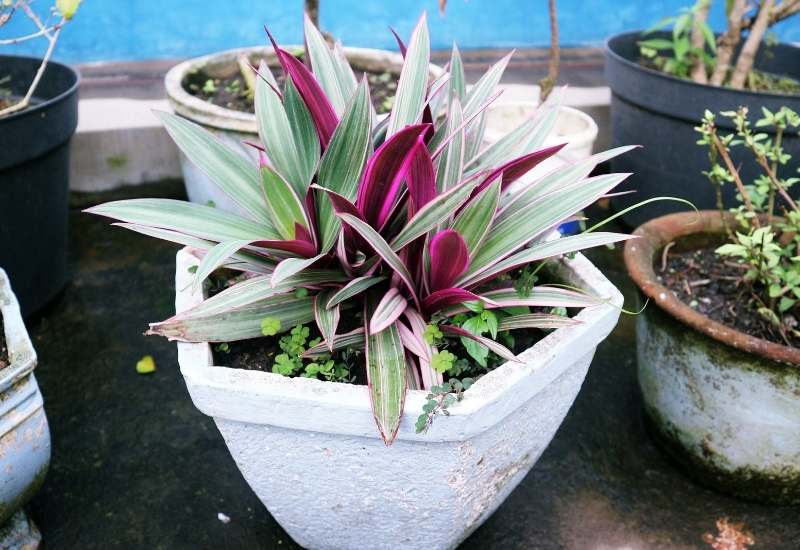
Moses in the cradle is an easy to grow and care for houseplant. It is called Tradescantia spathacea for scientists and it is a semi-succulent evergreen herbaceous perennial original of Central and South America.
It owes this name to the cradle like spathes it produces on top of the pointed tongue shaped cream, purple and green leaves. But it has other common names too, like oyster plant, boatlily, and cradle lily.
Moses in the cradle is a low maintenance and simple care plant, but, like all Tradescantia, it has different needs from other succulents. Key to its wellbeing are:
… and of course lots of love.
But if love is not enough, there will be other chores and care that your plant will enjoy. And of course, we have made up a complete, thorough and detailed list of all of them and set them out in an easy, step by step way for you in this article.
This moses in the cradle care guide will tell you how to water a Tradescantia spathacea; its light, temperature, humidity preferences and any additional care it might need to help it grow.
Moses in the Cradle Plant Overview
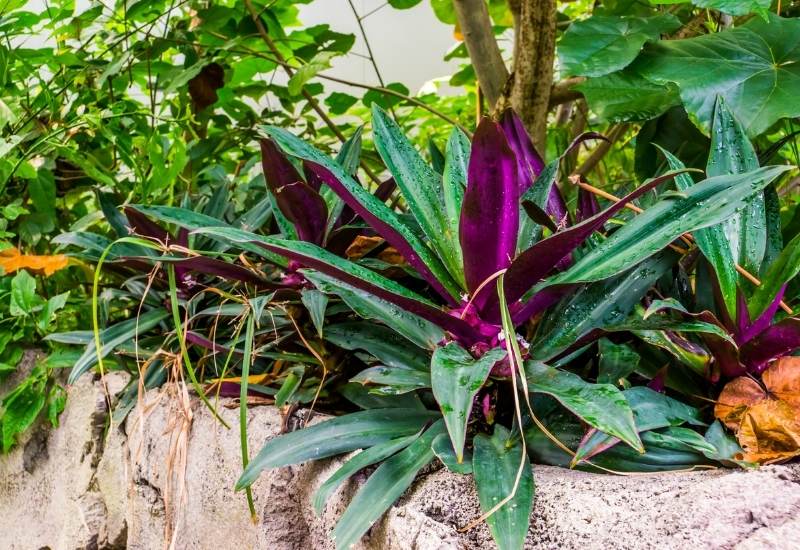
Tradescantia spathacea commonly known as moses in the cradle or boat lily is a tropical herbaceous perennial plant native of Mexico, Belize and Guatemala, but it has been cultivated all over the world for a long time because it looks very beautiful and it has naturalized in warm areas of the USA, like Florida, Texas and Hawaii.
It has a long history in gardening, in fact it was first identified back in 1788. It soon became clear that it was a low maintenance and fairly strong plant, which can be grown indoors with few problems and even outdoors it is fairly hardy.
The plant forms tufts of long, pointed leaves that start from the same place, at the base of the plant, just above the ground, like the top of a palm, or a long leafed rosette.
The leaves can vary in color though. While most the most popular plants have that “trinity” of shades so common with succulents, purple, green and cream, some are totally green and some green and purple.
It belongs to the Tradescantia genus, which has many different plants, some succulent and some not. It is one of those strange genera(plural of “genus”) that cross the two categories.
But like all Tradescantia plants it has three petals in the flower and it grows in soil and humidity conditions that most succulents would find “wet and unbearable”.
It is excellent as a potted plant, indoors, on terraces, patios etc. also thanks to its fairly small size, but it can also grow in flower beds and rock gardens where it will add a sculptural touch and chromatic variation.
Moses in the Cradle Fact Sheet
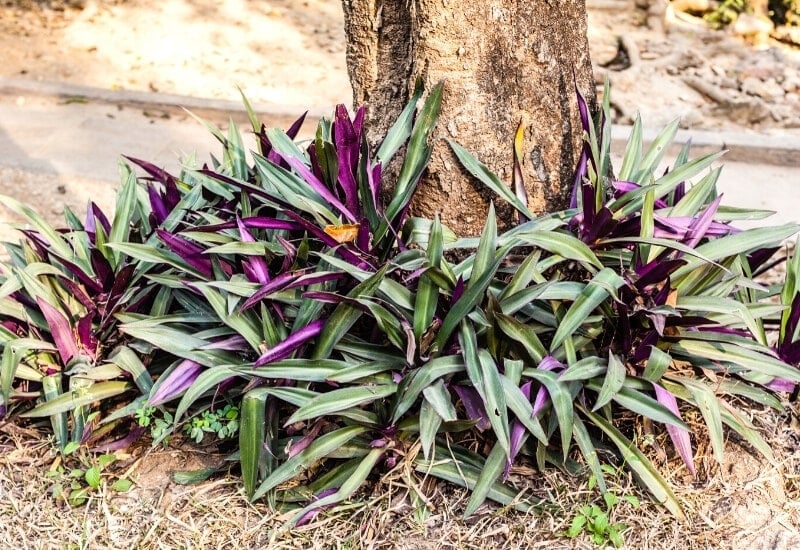
There are many things you will want to know about Moses in the cradle, and we compiled them all into an easy to use fact sheet so you can see them all at a glance if you need.
But a quick glance will help if you then know all the details… And here they are for you!
How To Care For Your Moses In The Cradle Plant
Moses In The Cradle Plant will Do Best In A Bright Spot
Moses in the cradle is a Sun loving plant, but it can also suffer from excess direct light, especially indoors. So here is what you need to do:
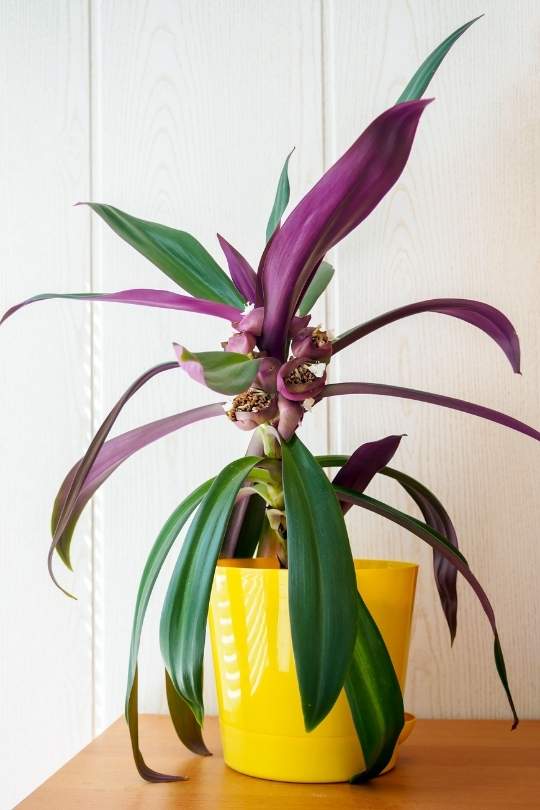
Nothing strange here, so, let’s think about watering…
Only Water When The Soil Begins To Dry Out
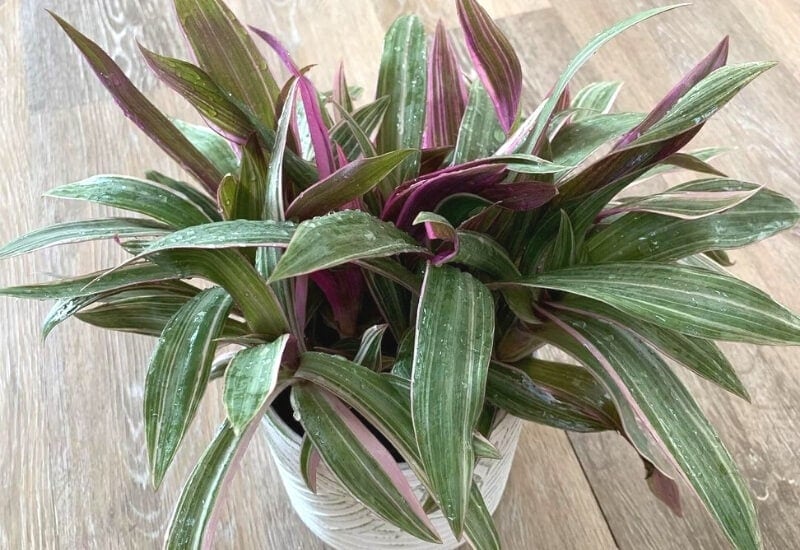
Moses in the cradle is a Tradescantia, and these plants do not like the dry conditions that bother succulents love. They want more water in fact. This also makes them ideal to mix in pots with non succulents though.
Having said all this, what happens of you forget about your Moses in the cradle plant? Like all Tradescantia, it likes humidity in summer but it is drought tolerant.
It will not die and it will only start to suffer after a fairly long period of time without water. You will notice it via brown and dry spots on the leaves if you have waited far too long.
Moses In The Cradle Loves Generous Amount Of Humidity
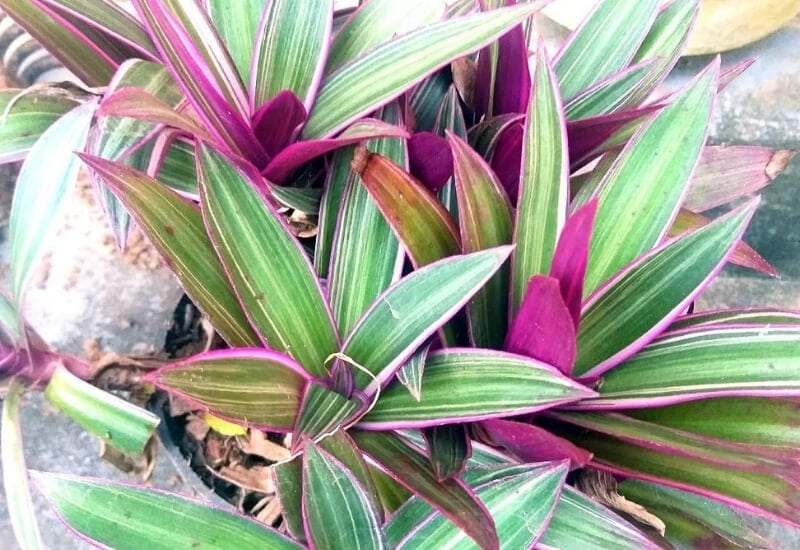
Moses in the cradle is not a typical succulent, in fact, it does not like lowhumidity, and here is what you need to know.
Even when it comes ti humidity, as you can see, it is very undemanding.
Soil In Your Garden Should Be Well Draining, Loose And Fluffy
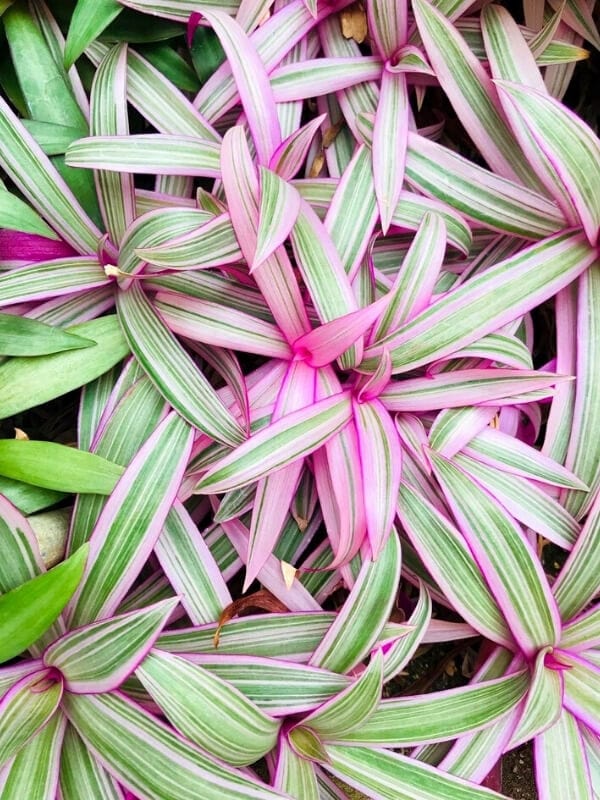
Because it is hardy to USDA zones 9 to 12, you can grow Moses in the cradle outdoors in many places of the USA, Canada and of course Europe, where it is a common plant in Mediterranean gardens. And it will not give you problems if you follow these guidelines:
It is very simple, just avoid alkaline soil…
Plant Your Indoor Plants In A Well Drained potting mix
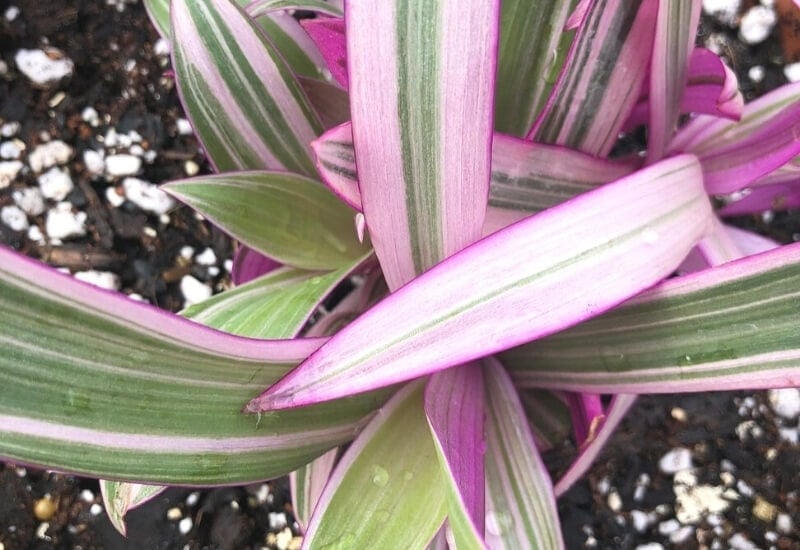
Super easy to grow, Moses in the cradle requires no strange and complicated potting mix. Just check these facts out and you will see:
When it comes to soil, as long as you understand the key point, that it does not like the same soil as other succulents, you will have no issues at all.
Know How And When To Repot Your Moses In The Cradle
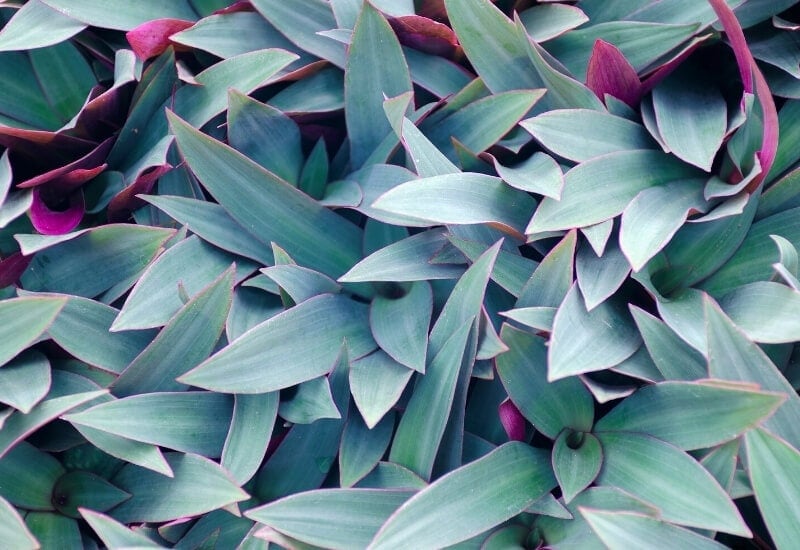
Repotting Moses in the cradle is simple and best done in spring. Repot when the plant looks crowded, which means that it looks like it has overgrown its pot. As a rule of thumb, you should do it it every two years.
And this is what you need to do now. Prepare a pot which is 25 – 30 % larger. Prepare new and fresh potting soil.Fill the bottom of the pot with gravel or drainage material, about 1 inch.Add some potting soil, to form a a bed at the bottom of the pot.
Flip the plant in the pot, hold the stem between your fingers and remove the old pot. If it does not come off easily, try tapping the pot…Ease the roots around the edges with your fingers.
Place the plant in the new pot. Add soil to about 1 inch to the edge. Press the soil at the base of the plant gently with your fingers. Water generously.
It is basically like repotting any plant, with the added advantage that its shape makes it easy to hold…
Prune Moses-In-The-Cradle Leaves Every Spring To Encourage Growth
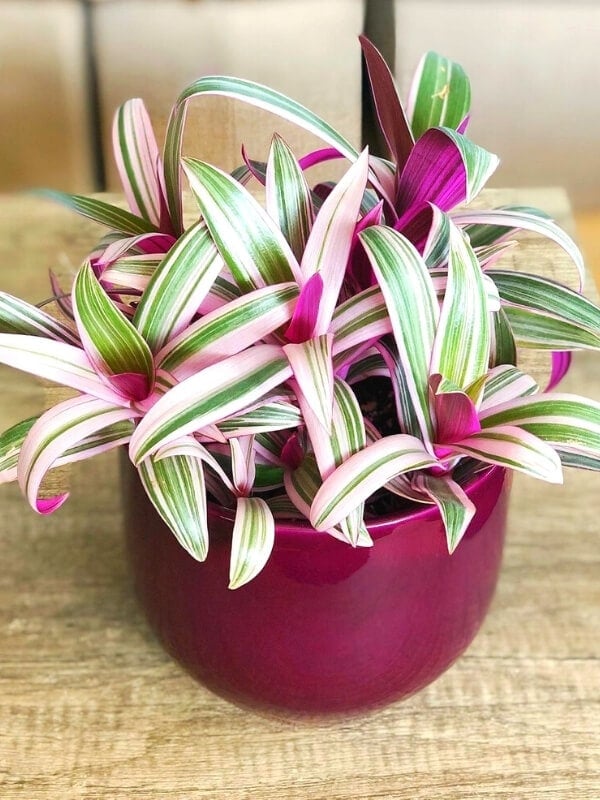
Moses in the cradle does not require pruning because:
However, you can, when necessary, trim off the leaves to correct its shape or to eliminate dry and old ones, a d this is easily done. Note that the best time to so it is spring.
Get some sharp scissors.Then disinfect the blades.You should always use sterile blades when you prune plants, because that cut, that wound, can be infected and dirty blades carry diseases from plant to plant.
Now cut the leaf as close to the base as possible, leaving about ½ to 1 inch though.If the cut is not neat, correct it with the scissors.
Note that if the leaves are dry, you can just tear them off. But do not force this operation. If they don’t come off easily, you risk damaging the plant. So, pick up your scissors and use them in case.
Propagate Moses In The Cradle From Stem Cuttings
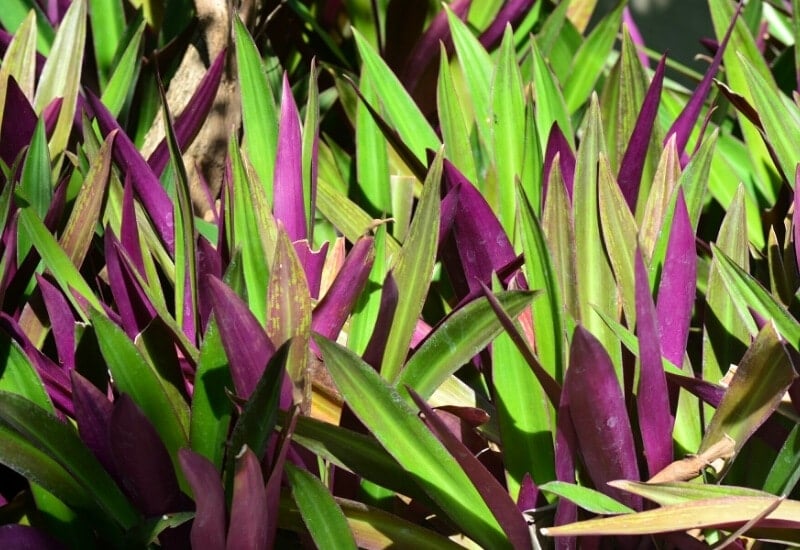
The best way to propagate Moses in the cradle is by stem cuttings, and the best time is spring, when the plant is most vigorous and full of energy. Still, you may get decent results also in summer. Fall may be too late and in winter the plant is very slow, so, this is the worst time to try it.
In any case, it is quite a straightforward operation. Here is how to do it.
And in about 2 to 3 weeks, you will have a new and independent plant!
Feed Your Moses in the Cradle With a general houseplant fertilizer
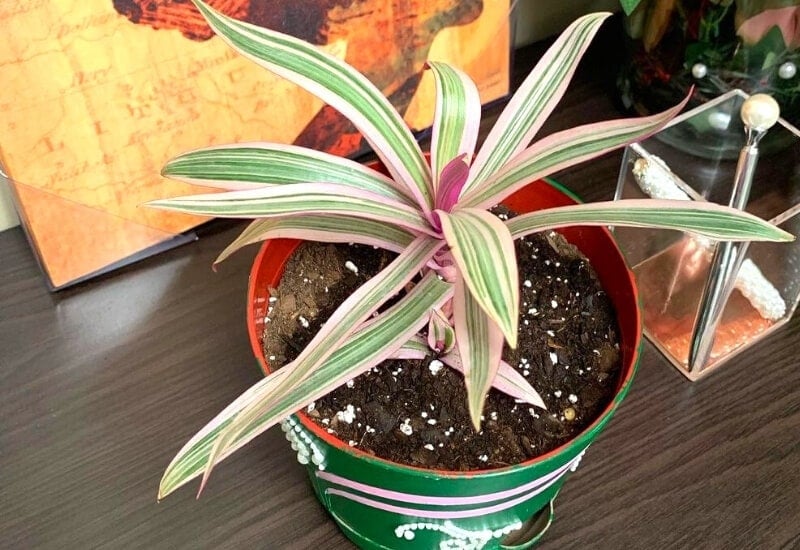
In terms of feeding and fertilizing, Moses in the cradle is a very average plant. Here is all it needs.
Outdoors, you may want to add some compost to the soil in spring and then, if necessary, again later in summer.
Moses In The Cradle’s Flowers
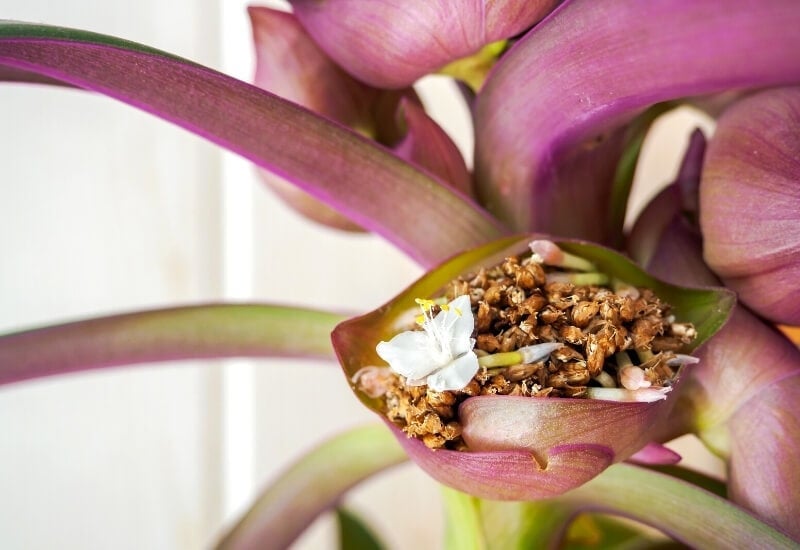
Moses in the cradle has the typical Tradescantia flowers. They are fairly small, 1 to 2 inches wide, and they have the classical broad and pointed heart shape of the petals of this genus. But they also have the trademark number petals of this genus: 3.
The flowers themselves are white in color and they look a bit like icing sugar… But like all Tradescantia flowers, they could be best described as “beautiful”, “fairly original” and “intriguing” but certainly not “showy”.
However, what sets this species apart from her sister species is the bract that nestles the flowers. It is purple and boat shaped… And this is where the names Moses in the cradle, boat lily, oyster plant etc. come from…
Each bract will contain a few flowers, providing like a little pocket, a pouch, but also a colorful frame to the fresh and candid flowers.
Moses In The Cradle Diseases
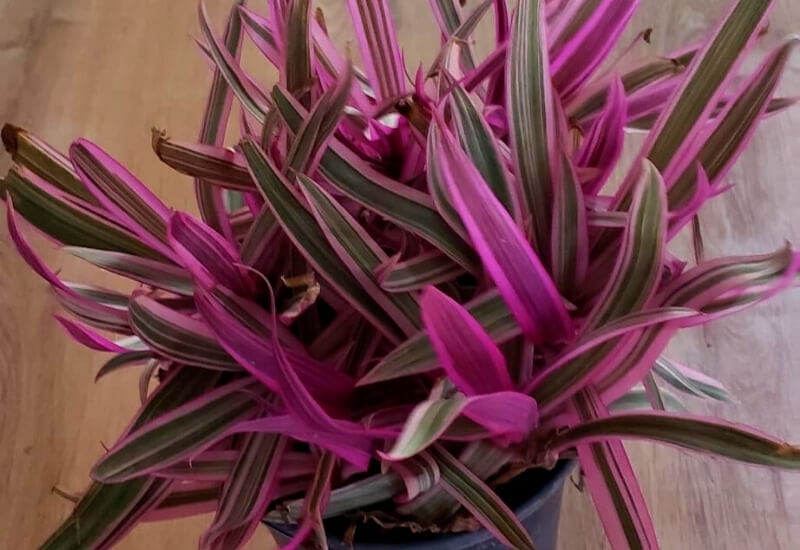
When the words “Moses in the cradle” and “diseases” come together, most botanists think about the diseases it can cure. In fact, it usually gets few diseases, but it is used to treat lots of ours. Still, there are a few you need to loon out for, and here they are…
Root rot is the most common and dangerous disease for Moses in the cradle, like for all succulents. It is caused by overwatering and especially by stagnant water in the soil, so, bad drainage is usually the “root cause of root rot”…
You will often discover it when it is quote late, as it starts underground. The first signs may be a simple lack of energy, then softening of leaves, which become yellow and mushy or brown and rotten. The same applies to the base of the stem.
In many cases, the only solution to root rot is propagation of a healthy part of the plant. However, if you find it, uproot the plant, remove all the soil, cit off all rotting tissue (of roots too), sprinkle organic sulphur powder on the roots, allow the plant to stay in a dry and ventilated place for two days. Then repot the plant in new potting soil.
Leaf spot is the other most common disease of Moses in the cradle. It will appear as spots on the leaves, literally like little dots. This is not usually a life threatening condition, like root rot. But it will weaken the plant and it may lead to other and more serious problems.
As soon as you notice it, cut all the severely damaged parts of the plant. Any part that has dried up or lost any chance of surviving. This is to allow the plant to focus its energy on the healthy parts of the plant. Then, use neem oil or other fungicides to eliminate the leaf spot.
Generic fungal infections too happen with Moses in the cradle. These may appear mainly in two ways: as mold on the leaves or as lacerations and discoloring.
If you see a limited infestation, you may just need to remove the affected leaves, but to be sure, spray some neem oil to stop eventual spores from spreading. In case it is serious, again, do cut all the damaged parts, including roots if necessary. Then treat with neem oil or another natural fungicide.
Have you noticed what all these diseases have in common? Excessive moisture, especially watering. So, in order to avoid them, be careful with watering and, especially, use very well drained potting soil.
In summer, if the room you have your Moses in the cradle gets warm and moist, give your plant a little holiday in a well ventilated place outdoors, even on a balcony…
Frequently Asked Questions and Answers on Moses in the Cradle
People have been asking questions onMoses in the cradle since it was identified in 1788. It is time to give these questions an answer! Here they are…
1. My Moses In The Moss Has Changed Color, Is It Sick?
Moses in the moss changes color very easily. Like all succulents, it has great flexibility with pigments, which are what gives flowers and leaves their color. So, don’t worry, it does not mean that your plant is sick.
The colors that “disappear” more often are purple and especially the cream… The one that tends to “take over” is green, which also can change in darkness.
2. What Makes Moses In The Cradle Change Color?
The main factor in the color changes of Moses in the cradle is light. The more light you give it (without ever exposing it to direct light indoors, remember), the more the purple and especially the cream will be stable.
As soon as the the plant needs light, it replaces the cream, which is not capable of photosynthesis with green.
3. Can I Recover Moses In The Cradle Variegation?
Ok, once the colors have gone, it is hard to get the plant back to its original variegation. However, first of all, move it to a place with lots of bright but indirect light…
The purple will come back more easily, especially as the season progresses (summer, fall and even winter). The cream is very hard to restore.
But it should come back with new leaves.
If you really want, you may cut some of the older leaves and encourage new growth to speed up the recovery of variegation.
4. Can I Grow Moses In The Cradle With Other Plants?
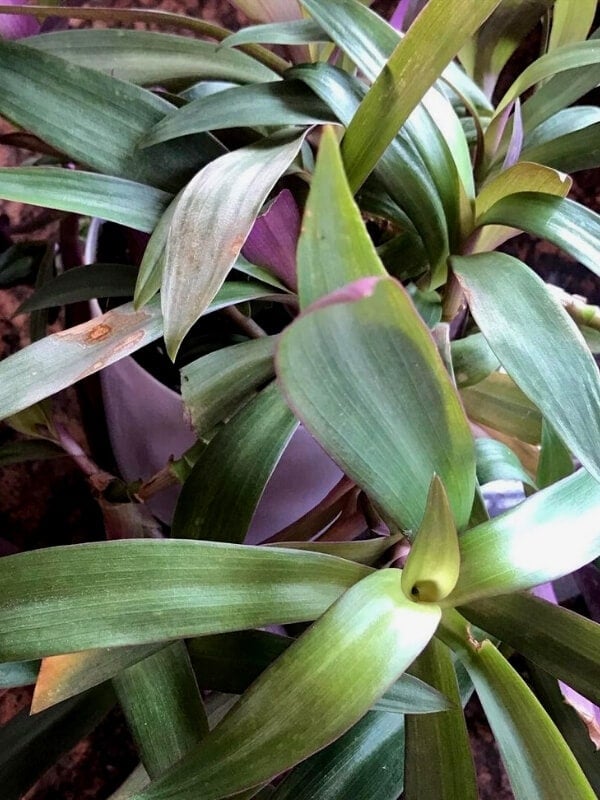
Yes you ca grow Moses in the cradle with other plants. Just make sure they match not only aesthetically but also in terms of needs. Choose plants with similar soil, water and temperature needs and you will have a beautiful and happy composition.
And you are in luck, because the needs of Moses in the cradle are quite generic and they match those of many other plants. Specifically, with Tradescantia in general, you can mix this succulent plant with quite a a few non succulents! As you know, this is quite a rare quality.
Growing Moses in the Cradle
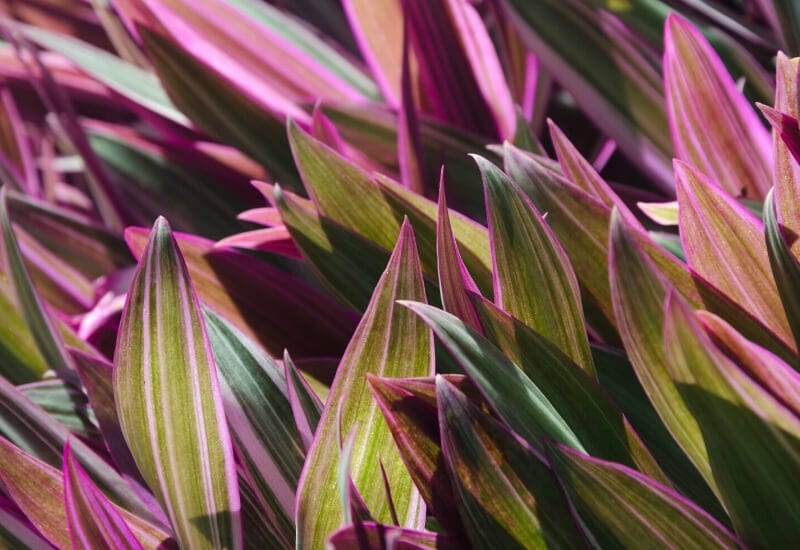
Moses in the cradle is easy to grow and very rewarding. Bookmark this article and you will never need to worry again.
You have just rad absolutely everything you need to know to grow oyster plant, and, if you allow the pun, to help a little baby in a cradle turn into a happy, healthy and adult plant.
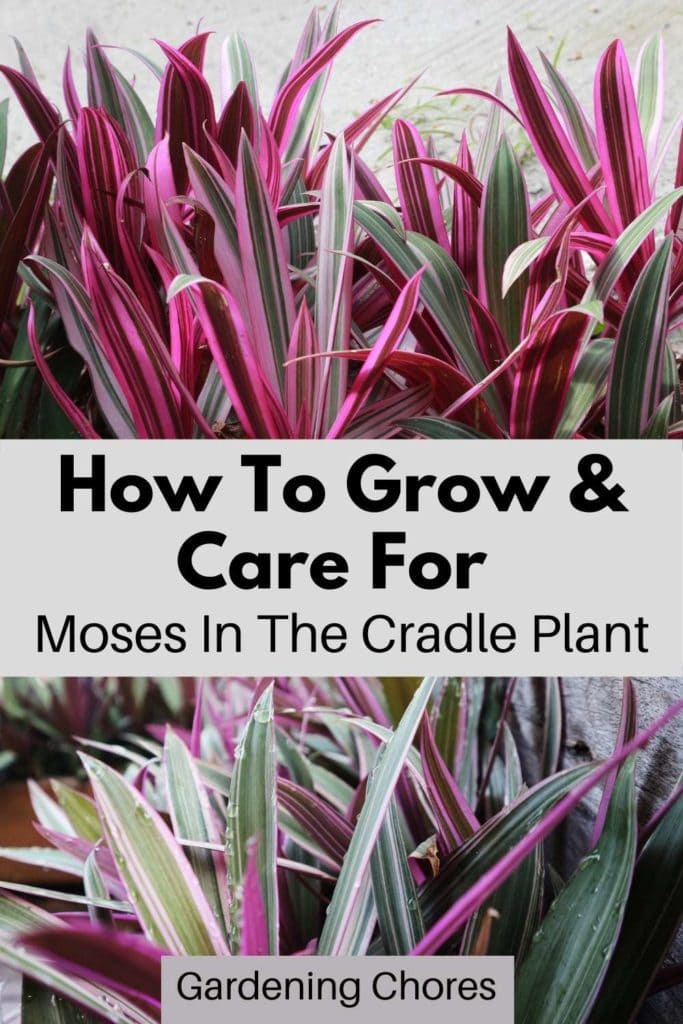

Written By
Amber Noyes
Amber Noyes was born and raised in a suburban California town, San Mateo. She holds a master’s degree in horticulture from the University of California as well as a BS in Biology from the University of San Francisco. With experience working on an organic farm, water conservation research, farmers’ markets, and plant nursery, she understands what makes plants thrive and how we can better understand the connection between microclimate and plant health. When she’s not on the land, Amber loves informing people of new ideas/things related to gardening, especially organic gardening, houseplants, and growing plants in a small space.

When do u pick the little boat with the flowers in it off the plant or do u just leave them on
You should leave them.